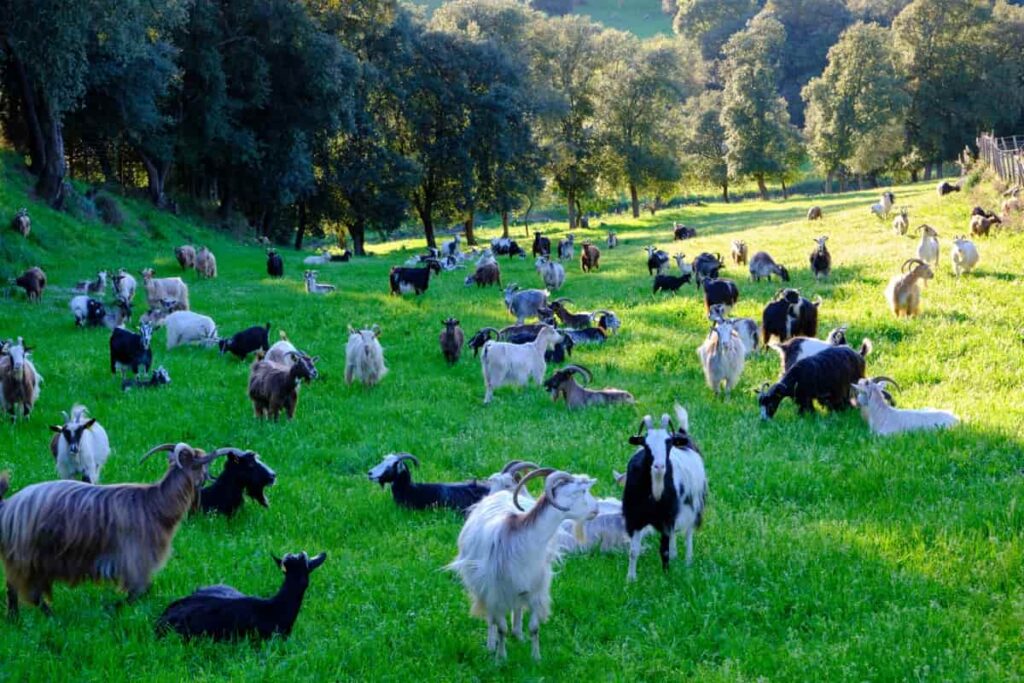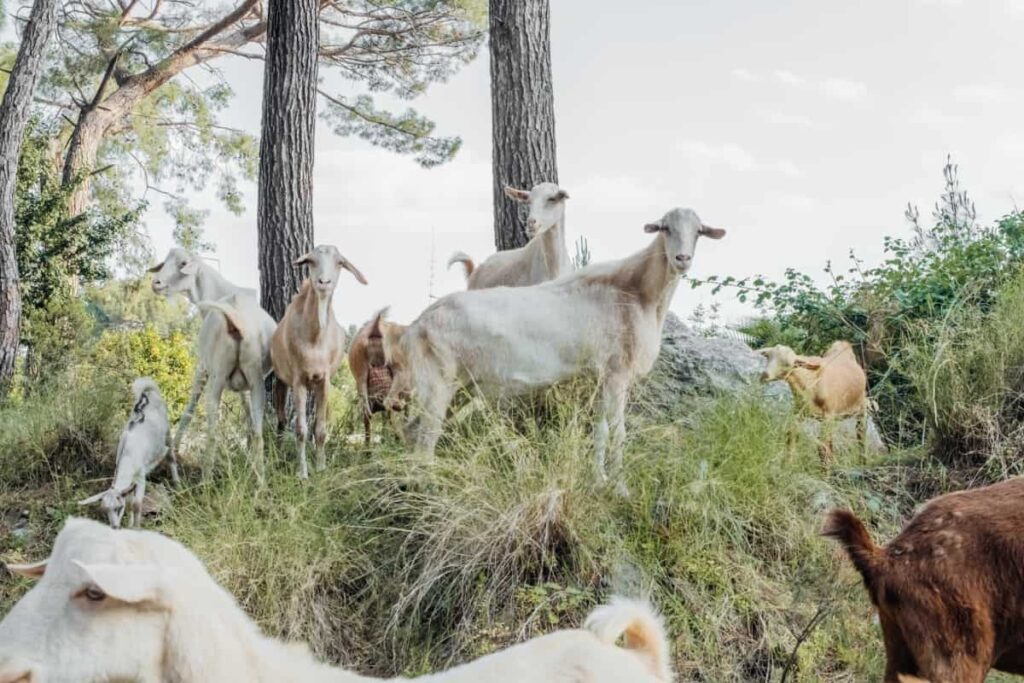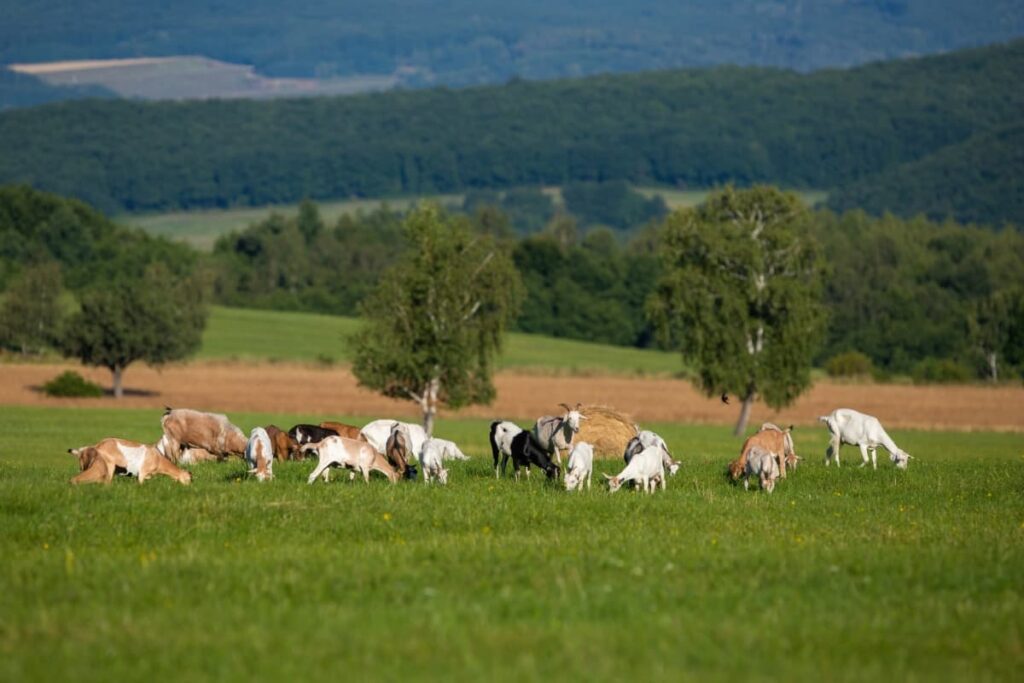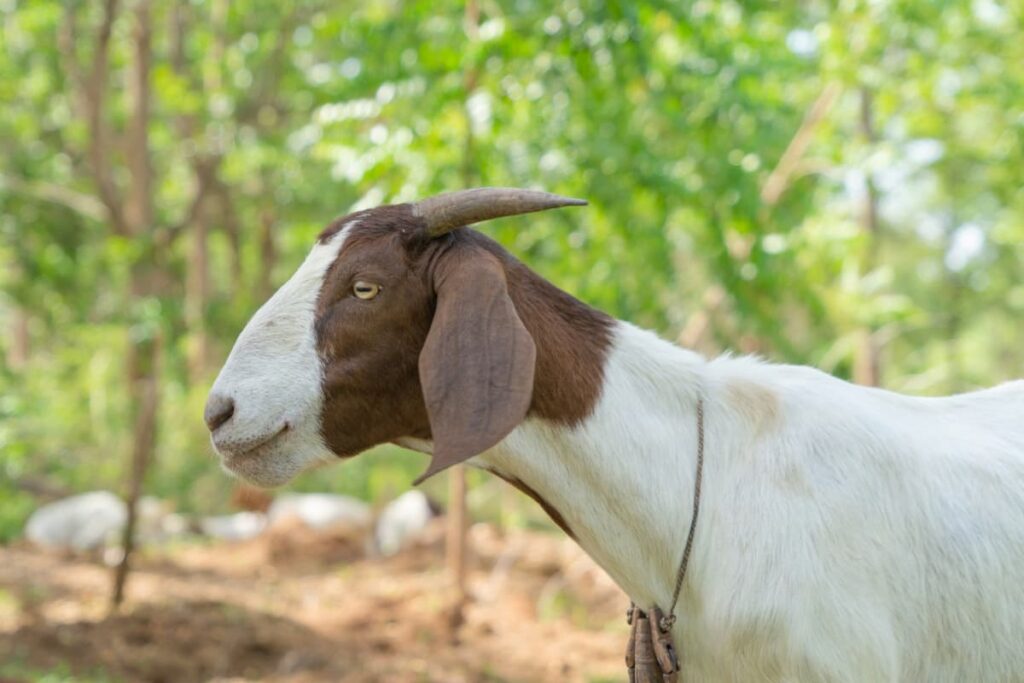Goats play a crucial role in pest control within agroforestry systems. Their importance cannot be understated when it comes to maintaining the health and productivity of these complex ecosystems. These adorable creatures aren’t just here for their charm; they are highly effective agents in keeping pests at bay in agroforestry systems.

How to Utilize Goats for Pest Control in Agroforestry
Goats as Pest Control Agents in Agroforestry Systems
These versatile animals have an instinct for browsing and grazing on vegetation, making them effective at controlling unwanted plants and insects. Goats are known to preferentially browse on these plants, helping to suppress their growth and prevent them from spreading throughout agroforestry systems.
In addition to controlling invasive plants, goats are natural predators of insect pests. They consume different insects, including grasshoppers, beetles, and aphids, which can cause significant damage to crops in agroforestry systems. Farmers can reduce reliance on chemical pesticides by introducing goats into the ecosystem while maintaining healthy crop yields.
Benefits of Using Goats for Pest Control in Agroforestry
Agroforestry is a sustainable farming system combining agriculture and forestry’s benefits. It aims to create diverse and resilient ecosystems while providing economic opportunities for farmers. Goats are natural grazers and excel at controlling vegetation growth. Furthermore, goats can effectively manage invasive plant species that threaten the health of agroforestry systems. In addition to weed control, goats act as natural predators against insect pests.
Goat manure enriches the soil with organic matter, improving its fertility. From an economic standpoint, utilizing goats for pest control can be cost-effective compared to other methods, such as manual weeding or chemical treatments. Goats provide a low-cost alternative that requires minimal labor input.
Selecting the Right Goat Breeds for Effective Pest Control in Agroforestry
Different goat breeds have varying grazing preferences and abilities, making some more suitable than others for pest control. The major factor in choosing goat breeds is their browsing behavior. Goats that exhibit strong browsing tendencies are ideal for controlling invasive plant species in agroforestry systems. Smaller or medium-sized goats tend to be more nimble and agile, allowing them to access hard-to-reach areas where pests may hide or thrive.
Some popular goat breeds known for their effectiveness in pest control include Kiko goats, Spanish goats, Boer goats, Savanna goats, and Nigerian Dwarf goats. These breeds possess browsing ability, agility, and adaptability to varied environments. For those looking specifically to target insect pests in agroforestry systems, Nigerian Dwarf goats may be an excellent choice. Despite their small size, these goats possess a voracious appetite and are skilled at consuming leaves infested with insects such as aphids or caterpillars.
Designing and Implementing Grazing Strategies for Optimal Pest Control
By strategically managing the movement of goats, farmers can target specific areas and pests while preserving the overall health of their land. Rotating goats between different sections of the agroforestry system helps prevent overgrazing and allows vegetation to recover, reducing the risk of pest outbreaks.
In case you missed it: Essential Goat Farming Equipment and Tools for Goat Farm Operations

Grazing should be timed based on the life cycles of targeted pests. Strategic fencing is another tool that can be used in grazing strategies for pest control. Monitoring and adapting grazing strategies based on pest populations are essential for long-term success. Regular observation allows farmers to assess whether current approaches effectively control targeted pests or if adjustments are needed.
Managing Goat Herds for Sustainable Pest Control in Agroforestry
By carefully managing the number of goats and their grazing patterns, farmers can effectively utilize these animals as natural pest control agents. Rotational grazing involves dividing the pasture into smaller sections and regularly rotating the goats through them. Maintaining proper nutrition and providing sufficient clean water are also essential for keeping the herd strong and active.
Proper fencing is crucial for managing goat herds in agroforestry systems. In addition, farmers should consider integrating other pest management strategies alongside goat grazing, such as planting companion plants or utilizing traps or barriers when necessary.
Integrating Goats into Agroforestry Systems: Best Practices and Considerations
Different breeds have varying grazing preferences and abilities, so choose goats well-suited for your particular environment and pest control needs. Rotating the goats between other areas of the agroforestry system is essential, allowing vegetation time to regenerate while effectively controlling pests in targeted zones.
Managing goat herds is also critical for long-term success. Regular monitoring of herd health, providing proper nutrition and water sources, and practicing responsible breeding techniques will help maintain a healthy population of goats for sustained pest control efforts. Establish fencing or other barriers when necessary to protect young trees from browsing by the goats.
Utilizing Goats to Control Invasive Plant Species in Agroforestry
In agroforestry systems, invasive plant species can wreak havoc on the health of the land. These aggressive plants outcompete native vegetation, decreasing biodiversity and reducing crop yields. Goats have an incredible appetite for many plants, including many invasive species. The beauty of using goats for pest control is that they can access areas with which traditional machinery or human labor may struggle. They are climbers and can easily navigate steep slopes or dense vegetation.
Specific considerations are required for selecting which goat breeds are best suited for controlling invasive plant species. Different breeds exhibit varying levels of preference for particular types of vegetation. For example, Boer goats are known for their voracious appetites and ability to devour even tough weeds like thistles or brambles. On the other hand, Kiko goats excel at browsing shrubs and woody plants.
Goats as Natural Predators: Controlling Insect Pests in Agroforestry
When goats graze in agroforestry systems, they consume vegetation and inadvertently eat insects. This includes harmful pests like aphids, caterpillars, and grasshoppers. By doing so, goats help to keep pest populations under control without the need for chemical pesticides. The benefit of using goats as natural predators is that it provides a sustainable and environmentally friendly approach to pest management. Instead of relying solely on synthetic chemicals that can harm beneficial insects and pollinators, integrating goats into agroforestry systems offers a more holistic solution.
Enhancing Soil Health and Fertility through Goat Grazing in Agroforestry
When goats browse plants, they consume the vegetation and leave behind nutrient-rich droppings. These droppings act as a natural fertilizer that enriches the soil with essential nutrients. Furthermore, as goats move around the grazing area, they help to break up compacted soil with their hooves. This improves soil structure and allows for better water infiltration and root growth. Their hooves help incorporate organic matter into the soil, providing food for beneficial microorganisms contributing to soil health.
In case you missed it: 10 Best Herbs for Diarrhea Treatment in Goats

Economic Viability of Using Goats for Pest Control in Agroforestry Systems
Using goats for pest control can significantly reduce the need for expensive chemical treatments. Farmers can save money on pesticides and other chemical inputs by relying on these four-legged creatures to manage pests. Moreover, goats are cost-effective because they require minimal maintenance.
They can thrive in diverse environments and feed on various vegetation. This means lower costs for feed and shelter compared to traditional pest control methods. Farmers can sell goat products such as milk, meat, or breeding stock. These additional income sources contribute to the overall economic viability of using goats for pest control.
Frequently Asked Questions about Goats for Pest Control
Can Goats Effectively Control Pests in Agroforestry Systems?
Goats are natural foragers who can target and consume various pest species. Integrating them into agroforestry systems can help keep pest populations in check without the need for harmful chemical pesticides.
What are Some Benefits of Using Goats For Pest Control?
Using goats as pest control agents offers numerous advantages. It reduces the reliance on synthetic pesticides, promoting healthier ecosystems. It provides an organic solution that is safe for both humans and animals. Additionally, goats’ grazing behavior helps manage vegetation growth while controlling pests.
Which Goat Breeds are Best Suited for Effective Pest Control?
Certain breeds excel at being natural predators against pests in agroforestry systems. For example, Kiko goats are known for their hardiness and browsing abilities, making them ideal candidates.
In case you missed it: 10 Best Herbal Remedies for Goat Deworming

Conclusion
Goats help control pests naturally without the use of harmful chemicals. They have an innate ability to target specific plants or insects that may threaten crops or trees. This targeted grazing prevents the spread of pests and reduces their populations, ultimately minimizing damage to agroforestry systems. In addition, utilizing goats for pest control can improve soil health.
- Types of Grass Growing for Goat Farm
- How to Train Goats for Milking: A Beginners Guide
- Goat Milking Practices and Equipment: A Beginner’s Guide
- Goat Farming for Fiber: Producing Mohair and Cashmere
- Maximizing Goat Milk Production: Tips for Dairy Goat Farmers
- Goat Farming as a Family Business: Strategies for Success
- Profitable Kenya Goat Breeds for Commercial Dairy and Meat Business
- Unlock the Secrets of Oberhasli Goat: Discover Raising and Management Practices
- Ultimate Guide to Myotonic Goats: Explore Profile to Raising